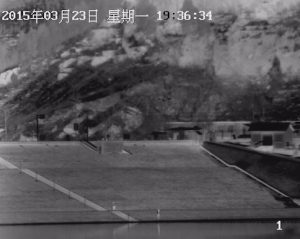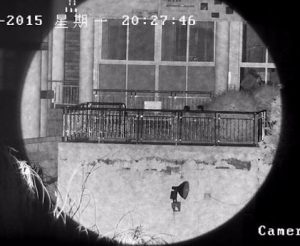What are the differences between night vision and thermal imaging?
Both the two technologies enable you see targets at night but working theory is different
Thermal imaging cameras use heat energy emitted from the observed object, it is passive and does not need any light to function. while infrared or infrared camera works by amplifying nearby visible light using infrared illuminators which is initiative illumination.
Night vision
In the case of poor lighting at night, it is difficult for people to find distant targets with the naked eye.
Long-distance monitoring can be achieved through low-light cameras with active illuminators, such as LED and LASER. Laser night vision lighting belongs to active infrared night vision lighting. Infrared wavelengths are invisible to the human eye, but in the near-infrared band, electronic devices such as CCDs can be detected from the side. Active infrared night vision uses this principle. However, infrared lasers generally require spot homogenization as illumination, due to problems such as light mode distribution. Illumination uniformity is an important criterion to measure the performance of laser night vision illuminators.
Thermal imaging
Thermal imaging or infrared (IR) imaging technology is a technology, uses an infrared scanner to measure the thermal signal of an object compared to other surrounding objects, and converts these thermal signals into an image in which the higher thermal signal Is highlighted, becomes brighter and easier to view. This technology has many applications in many different environments, such as homeland defense, airport, port surveillance, law enforcement, etc.
The main advantage of using an infrared camera is that it does not need any light to work, and bad weather conditions will not affect its function. Through fog, smoke, overcast clouds or sandstorms, the thermal imaging camera will always display reliable and clear images.
The monitoring distance of the thermal imaging camera, with a telephoto lens, can reach several kilometers or even ten kilometers, and it is easier to find the target on the vast border.
The only noticeable disadvantage of thermal imaging cameras is that they are more expensive than night vision cameras. However, due to SHEENRUN’s research and development on the sensor 384×288 and 640×512 over the years, they have become cheaper and cheaper. Now, everyone from the military to civilians can use these cameras outdoor in farm, fish farm etc..
Thermal imaging VS laser night vision, which is better?
Both of the cameras have their advantages and shortcomings. To the outdoor thermal imaging camera, it is usually with telephoto lens and optical zoom, long monitoring distance up to 10km, could capture targets easily in total dark environment, however, according to the Johnson’s criteria, it is hard to see targets details in long distance.
For laser night vision cameras, they could reach long range at night up to 4-5km, also, targets could be observed with each details with the laser night vision cameras. However, laser illuminator is with limited monitoring scope, it is hard to find targets at night in long distance, it is just like searching light.
Considering features and disadvantages of both thermal imaging cameras and laser night vision cameras, Sheenrun combines the cameras, which is multi-sensor camera. Using thermal camera to detect targets and observe details with day camera with laser illumination. Greatly improve monitoring efficiency.

Thermal imaging camera effect
